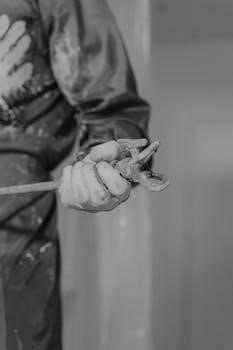The Master and Margarita PDF⁚ An Overview
Mikhail Bulgakov’s “The Master and Margarita” blends fantasy and chilling realism. You can find it in PDF form online. Explore satirical dark comedy, Christian philosophy, and love. Different translations are available for free download.
“The Master and Margarita,” penned by Mikhail Bulgakov between 1928 and 1940, remained unpublished until 1967. This literary masterpiece weaves supernatural elements with satirical dark comedy and Christian philosophy, defying categorization within a single genre. The narrative follows Woland (Satan) and his retinue, including the mischievous Behemoth, as they wreak havoc in Moscow.
Simultaneously, it explores the plight of the Master, an author whose novel about Pontius Pilate is rejected, and his passionate love for Margarita. Bulgakov’s work intricately blends fantasy and chilling realism, offering a profound commentary on Soviet society and human nature.

Availability of “The Master and Margarita” in PDF Format
Bulgakov’s masterpiece is widely accessible in PDF format. Many websites offer free downloads. Various translations can be found. Readers should be mindful of copyright and licensing.
Free PDF Downloads
Numerous online platforms provide free PDF downloads of “The Master and Margarita,” granting readers easy access to Bulgakov’s iconic novel. These downloads often include various translations, catering to a global audience. Some sources offer enhanced versions with illustrations and notes. Readers can find these free PDFs on websites dedicated to classic literature, online libraries, and file-sharing platforms. It is crucial to verify the legitimacy of the source and respect copyright regulations. While free access is convenient, supporting authors and publishers through legitimate purchases ensures the continued availability of quality literature. Many free versions are available under Creative Commons licenses. Always confirm the licensing terms.
Legality of Free Downloads
The legality of downloading “The Master and Margarita” for free depends on copyright laws and the source of the PDF. Copyright protects the author’s work, and unauthorized distribution is illegal. Some versions are available under Creative Commons licenses, permitting free use with attribution and non-commercial purposes. Websites offering free downloads should clearly state the licensing terms. Downloading from unofficial sources may infringe on copyright, potentially exposing users to legal risks and malware. Supporting authors by purchasing legitimate copies encourages the creation and distribution of quality literature. Always verify the licensing terms before downloading any PDF to ensure compliance with copyright laws. Piracy hurts authors.

Different Translations Available in PDF
“The Master and Margarita” has various translations available in PDF. The Richard Pevear and Larissa Volokhonsky translation is popular. Other English and French translations also exist, offering diverse interpretations of Bulgakov’s masterpiece.
Richard Pevear and Larissa Volokhonsky Translation
The Richard Pevear and Larissa Volokhonsky translation of “The Master and Margarita” is widely acclaimed. Many consider it a definitive English version. This rendition captures Bulgakov’s satirical tone and philosophical depth. Readers appreciate its accuracy and readability. You can find this translation in PDF format online, often with included notes and illustrations. This version allows a deep dive into the novel’s complexities. It faithfully renders the nuances of the original Russian text. The availability of this translation in PDF provides accessibility for readers and scholars. Its precision makes it a favored choice for academic study and casual reading.
Other English Translations
Besides the Pevear and Volokhonsky version, several other English translations of “The Master and Margarita” exist. These translations offer varying interpretations of Bulgakov’s masterpiece. Some prioritize a more literal rendering, while others emphasize stylistic flair. These different versions can be found in PDF format across the internet. Exploring various translations enriches understanding of the novel. Each translator brings a unique perspective to the text. Readers can compare interpretations and appreciate the novel’s multifaceted nature. Free PDF downloads make these alternative translations easily accessible. This allows for a comprehensive exploration of Bulgakov’s work, fostering deeper engagement.

Themes Explored in “The Master and Margarita”
“The Master and Margarita” explores deep themes. These include Soviet satire, the battle between good and evil, and the power of love and redemption. These are woven intricately within the narrative.
Satire of Soviet Society
Bulgakov’s “The Master and Margarita” delivers a devastating satire of Soviet life, particularly the literary elite of 1930s Moscow. The novel wryly critiques the atheism promoted by the state and the corruption that permeated various levels of society. Through fantastical elements and dark comedy, Bulgakov exposes the absurdity and hypocrisy prevalent during Stalin’s regime. The arrival of Woland and his retinue serves as a catalyst, revealing the flaws and moral compromises of the characters they encounter. The novel’s satirical lens offers a sharp and insightful commentary on the socio-political climate of the Soviet Union, highlighting its constraints on artistic expression.
Good vs. Evil
The eternal conflict between good and evil is a central theme in “The Master and Margarita,” embodied by the contrasting forces of Woland (the Devil) and the Master’s portrayal of Jesus Christ and Pontius Pilate. Bulgakov explores the nuanced nature of morality, blurring the lines between these opposing forces. Woland, while representing evil, often acts as a catalyst for exposing the hypocrisy and corruption of Soviet society. The Master’s story delves into the complexities of moral choices and the consequences of both good intentions and malevolent actions. Ultimately, the novel suggests that good and evil are intertwined, shaping the human experience.
Love and Redemption
Love and redemption form a powerful undercurrent in “The Master and Margarita,” most notably through the passionate relationship between the Master and Margarita herself. Margarita’s unwavering love for the Master drives her to make a pact with the Devil, demonstrating the lengths she will go to for his sake. This act, born of love, becomes a catalyst for both their potential damnation and ultimate redemption. The novel suggests that even in the face of despair and moral compromise, love can be a transformative force, offering the possibility of salvation and a path towards spiritual healing and renewal. Their love defies societal norms.
Characters in “The Master and Margarita”
“The Master and Margarita” features a cast of unforgettable characters. These range from the tormented Master to the devoted Margarita, and the enigmatic Woland, along with his mischievous retinue. They exist in both fantasy and reality.
The Master
The Master, a central figure in Bulgakov’s novel, is a writer of an unpublished novel about Pontius Pilate and Jesus. The Master is engulfed in despair within a psychiatric hospital. He represents the plight of artists under oppressive regimes. His passionate love for Margarita brings a glimmer of hope amidst the darkness. The Master’s novel sparks the events in the story, intertwining the biblical narrative with Moscow in the 1930s. His character embodies the struggle between artistic integrity and societal constraints. He eventually finds freedom and peace, but only through extraordinary circumstances involving the devil himself. The Master is a symbol of creativity and resilience.
Margarita
Margarita is the devoted lover of the Master, demonstrating fierce loyalty and unwavering love. She is a central figure in Bulgakov’s “The Master and Margarita.” Margarita’s character embodies passion, courage, and resilience. She makes a pact with the devil, becoming a witch, to save her beloved. Her transformation grants her freedom and supernatural powers. Margarita participates in Woland’s grand ball, showing incredible strength. Her love for the Master drives her to defy societal norms. She represents the power of love and sacrifice. Margarita’s journey is one of transformation and liberation. She ultimately finds peace and reunion with the Master.
Woland and His Retinue
Woland, the devil, arrives in Moscow with his retinue, wreaking havoc. His companions include the vodka-drinking black cat, Behemoth, who adds comic relief. The retinue embodies chaos and supernatural elements in “The Master and Margarita”. Woland observes and manipulates the city’s elite, exposing their flaws. His presence challenges Soviet society’s atheism and materialism; The retinue uses magic and trickery to unveil hypocrisy. They reveal the true nature of humanity through their mischievous actions. Woland’s group acts as a catalyst for the novel’s events and themes. Their antics are both entertaining and thought-provoking. They serve as a mirror reflecting Soviet society’s moral decay. Woland and his crew are essential characters.

Adaptations of “The Master and Margarita”
“The Master and Margarita” has inspired graphic novels and film adaptations. These bring Bulgakov’s blend of satire, fantasy, and love to new audiences. Adaptations capture the novel’s unique spirit.
Graphic Novel Adaptations
“The Master and Margarita” has inspired several graphic novel adaptations, seeking to capture the novel’s surreal and satirical essence in visual form. Jean-François Desserre created a graphic adaptation, but it remained unpublished. Rodion Tanaev’s comic strip version offers another interpretation of Bulgakov’s masterpiece.
These adaptations provide a different entry point into the story for new audiences. The blend of fantasy, satire, and philosophical themes makes it a rich source for visual storytelling. Artists grapple with how to represent iconic scenes, like Woland’s arrival and Margarita’s flight.
The challenge lies in translating Bulgakov’s complex narrative into a concise and engaging visual format.
Film and Stage Adaptations
“The Master and Margarita” has captivated filmmakers and theater directors, leading to numerous adaptations. The novel’s blend of fantasy, satire, and profound themes presents a unique challenge for visual and theatrical representation. Adaptations strive to capture the essence of Bulgakov’s world, from 1930s Moscow to the biblical narrative of Pontius Pilate.
The devil, Woland, and his retinue, including Behemoth, pose a particular challenge for casting and special effects. Stage productions often rely on creative staging and costume design to bring the supernatural elements to life.
Film adaptations explore visual effects to portray the fantastical events. These adaptations offer diverse interpretations of Bulgakov’s masterpiece for wider audiences.